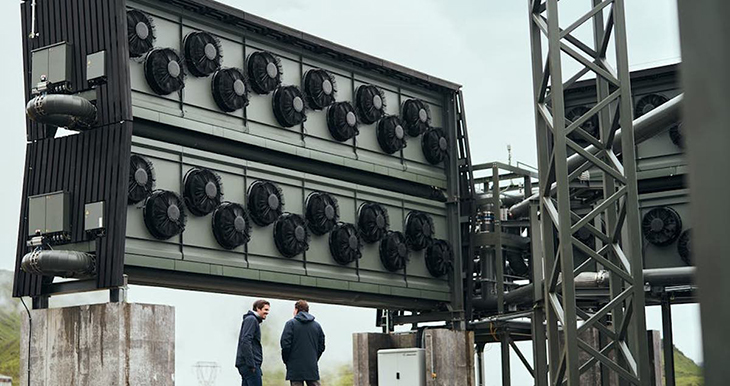
According to a new study, the methods used to suck up atmospheric air while filtering out carbon dioxide (CO2) are something that can be improved by adding copper to the filter material. When this is done, it potentially opens up the technology to many other uses that could produce a huge difference in the fight against global warming and climate change.
Bu adding copper, it also converts the CO2 that was captured into a harmless baking soda that can be stored in the oceans or otherwise turned into a saleable product.
Some scientists suggest that carbon capture is the only way to limit global warming to less than 1.5°C over this century if humanity begins to extract some of the CO2 that it’s been adding to that atmosphere through carbon capturing methods.
These machines come in two forms. The first of the two machines uses large fans to extract air from the environment, filter out CO2, and then store it underground to produce other chemical products. The second one does the work directly at the exhaust point of industrial facilities, natural gas wells, or power plants.
The old method deals with CO2 at very few parts per million, while the new method does as well, but at much higher concentrations. However, the placement in limited to industrial facilities.
The new study, published in Science Advances, reveals that adding copper to the ammine-based filter devices on the large ambient carbon-capture machine increases their efficiency while reducing costs.
Lead author and professor, Arup Sengupta, from Lehigh University in the United States, shares, “To my knowledge, there is no absorbing material which even at 100,000 ppm, shows the capacity we get it in direct air capture of 400 ppm.”
In addition to improving the filter’s performance, adding copper also presents a new opportunity for where the captured CO2 can be stored – in the ocean. The ocean is one of the largest carbon repositories on Earth, but excess CO2 causes acidification.
Fortunately, the copper in the amine filter causes a chemical reaction in seawater, which is to convert the captured CO2 into non-acidic baking soda or sodium bicarbonate. This breakthrough enables carbon capture facilities to be located in places with significant underground storage and drilling infrastructure, as well as along coastlines, making carbon capture more accessible.
Professor Catherine Peters from Princeton University, who was not part of the study, told BBC, “I am happy to see this paper in the published literature, it is very exciting, and it stands a good chance of transforming the CO2 capture efforts.”
Sengupta’s new method turns the captured CO2 into baking soda for depositing into the oceans, although other methods actually involve baking soda itself.
Just last July, there was another report that shared how Tata Chemicals Europe opened its first industrial-scale carbon capture and usage plant in the UK. The plant is capable of capturing 40,000 metric tons of carbon dioxide each year, which is approximately equivalent to removing more than 20,000 cars from the roads.
What are your thoughts? Please comment below and share this news!
True Activist / Report a typo


